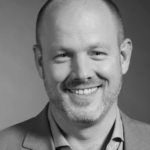Aligning Capital with Justice: How Innovative Finance Can Enable the Final Stretch Toward Energy Access in Africa
Global electricity access has long been a defining barrier to solving critical social and environmental challenges. Yet the world has made unprecedented progress over the past few decades. In 2010, an estimated 1.2 billion lacked access to electricity, compared to about 2 billion people in the 1990s. By 2023, that number had fallen to under 800 million people, meaning over 90% of the global population now has access to electricity. This ranks as one of the most significant development achievements in modern history.
However, extending this progress to include the remaining 10% — who are largely concentrated in fragile, rural and low-income regions — presents a persistent challenge to global energy access efforts. Many of these underserved people and communities are the hardest for energy infrastructure to reach, and most of them are in Africa. They range from rural farmers in northern Nigeria and nomadic pastoralists in the Horn of Africa, to residents of informal settlements in the Congo and families living on remote islands off the Tanzanian coast.
National utilities are already burdened with the demands of supplying electricity to urban centers and commercial customers, supporting the well-established conclusion that most of the unelectrified population is unlikely to be reached through grid extension. Extending power lines to sparsely populated and geographically isolated areas — where electricity usage is low and revenue collection is even lower — is often neither technically feasible nor financially sustainable.
New funding models are needed to support the expansion of decentralized energy to these communities — and that will require investors and other funders to align capital with justice, prioritizing innovative and patient investment approaches that move beyond easy-to-serve markets. The exclusion of these markets by the standard funding model is not only ineffective but also unjust, shutting out communities whose lack of energy access denies them a fair shot at meaningful development.
As the traditional economics of electrification break down at these margins, where conventional private investment struggles to reach the remaining unelectrified population, it’s time for a different call to action in the energy access sector. We need to rethink energy finance and the structure of capital itself to achieve universal access to affordable, reliable and sustainable energy. And to that end, we must unlock blended, patient and risk-tolerant capital for the last mile.
Harnessing Concessional Capital to Expand Energy Access
Private companies have played an enormous role in bringing decentralized solutions like solar home systems and mini-grids to underserved communities. But given the limits of commercial sustainability, the poorest and most climate-vulnerable regions are left out, as market rate capital is not available for businesses that must cover the high costs of serving them. If energy access efforts are left solely to existing commercial forces, these hardest-to-reach populations are at risk of waiting another generation for electricity.
In Northern Kenya, for instance, climate-driven droughts have severely impacted livelihoods and deepened energy poverty in areas still largely out of reach of the grid. The lack of private investment in energy access projects in these communities highlights how critical it is to map local vulnerability and match solutions and financing structures to context. India, for example, has made significant progress in extending its electrification efforts to underserved areas through the PM-KUSUM scheme, which has combined subsidies and concessional loans to support over 3.5 million farmers in installing clean energy irrigation systems.
This is the thinking behind initiatives like Acumen’s Hardest-to-Reach Fund in sub-Saharan Africa, which is designed to address the reality that commercial energy access financing models alone cannot serve every part of the map. At the institutional level, the World Bank and African Development Bank’s Mission 300 initiative aims to provide electricity to 300 million people in Africa through a mix of policy support, concessional finance and private sector engagement.
By offering flexible capital instead of prioritizing returns, investors and other funders can help make last-mile energy delivery viable and resilient, demonstrating that inclusion and resilience are investable when capital is structured appropriately. To bridge this gap, the energy sector must recognize that infrastructure is only one part of the challenge, and that the real bottleneck lies in developing financing models that work in high-risk, low-income environments. Concessional capital is essential in these markets, and it can take many forms, from first-loss guarantees to de-risk early investment, to results-based payments to incentivize service delivery, and blended finance structures that crowd in private capital by absorbing risk.
Making the Market Work – With the Right Tools
The last few decades have seen a flourishing of decentralized energy providers, offering solar kits, productive-use equipment and mini-grid solutions to tens of millions of households. This is where targeted concessional capital can make a difference, filling specific investment gaps and strengthening weak links.
In Nigeria, development finance institutions have enabled mini-grid developers to reach rural communities typically avoided by commercial lenders. A recent example is the $80 million receivables-backed syndicated loan facility for Sun King, structured by the IFC and Stanbic IBTC, which leverages the future payments expected from Sun King’s customers as collateral, while allowing its multiple funders to share the risk and expand their combined capital. Nithio provided specialized advisory and verification services to the facility, as part of our efforts to facilitate investments aimed at scaling access to off-grid solar energy and improving affordability for rural customers through sustainable payments.
In countries like Rwanda, results-based financing has enabled solar irrigation to scale up, increasing both energy access and local economic opportunity where it didn’t exist before.
A similar approach can be seen in the work of catalytic funders like DGGF, which supports emerging fund managers operating in frontier markets. In response to the growing scarcity of concessional capital, it has collaborated with groups like Investisseurs & Partenaires to document what works in SME finance and energy access. This collaboration has generated insights into new structures — like self-liquidating instruments such as revenue-based financing and redeemable equity — which create more predictability. It has also shed light on progressive fundraising models, in which fund managers launch smaller vehicles, demonstrate performance, and then subsequently scale with catalytic investor support. These models are better aligned with the realities of building companies in tough environments.
Nithio has engaged in similar partnerships while operating in these environments, both in our efforts to make investments in clean energy companies and to help others allocate capital to climate solutions that build resilience. We’ve found that our risk analytics and predictive tools are most effective when paired with concessional partners and development-oriented institutions that can help reduce investment risk, extend reasonable timelines and scale catalytic capital.
The Path Towards Sustainable Energy Access
With a population of 1.5 billion, Africa is growing rapidly and is projected to account for roughly one in four people globally by 2050. Yet across many African markets, there is a mismatch between the types of capital available and the needs of the communities. As demand rises for improved energy access and financing solutions that support inclusion, this gap calls for an urgent rethinking of how capital is structured.
In the global push towards green infrastructure, as wealthy countries invest in electric vehicles and prioritize safe markets with high returns, the clean energy revolution risks replicating the energy access inequities of past systems. Without intervention, the same communities that were excluded from grid infrastructure will also be excluded from modern off-grid solutions.
Achieving the energy-related Sustainable Development Goals hinges on aligning capital with justice by prioritizing innovative and patient investment approaches. By providing the right kind of capital to the businesses and innovations seeking to scale in Africa, today’s energy access movement can ensure that it truly reaches everyone, especially those who are hardest to serve.
Roeland Menger is the Chief Executive Officer at Nithio, a climate fintech platform unlocking investment for climate resilience.
Photo: CarlFourie, via iStockPhoto
- Categories
- Energy, Environment, Investing



